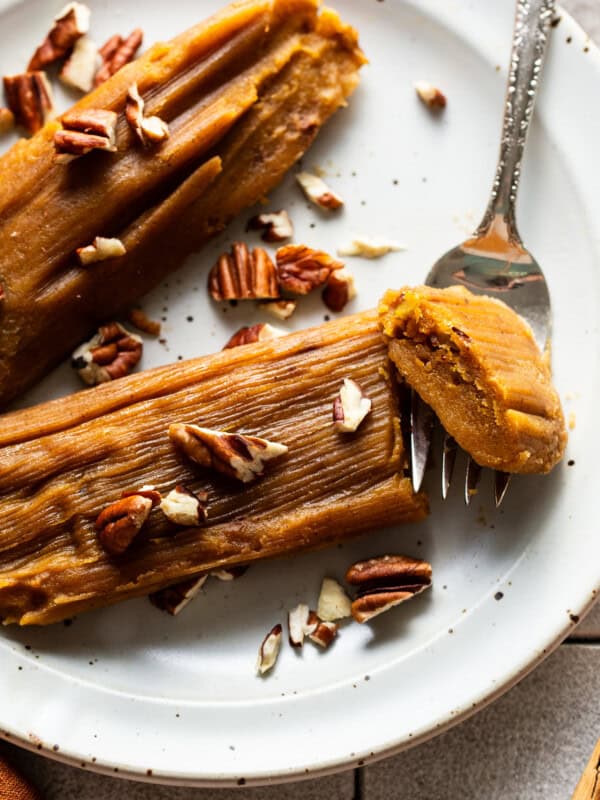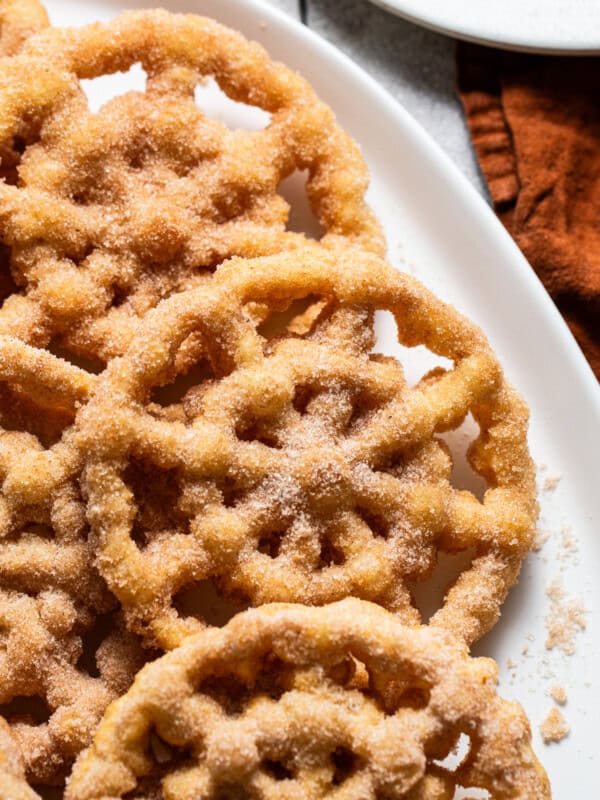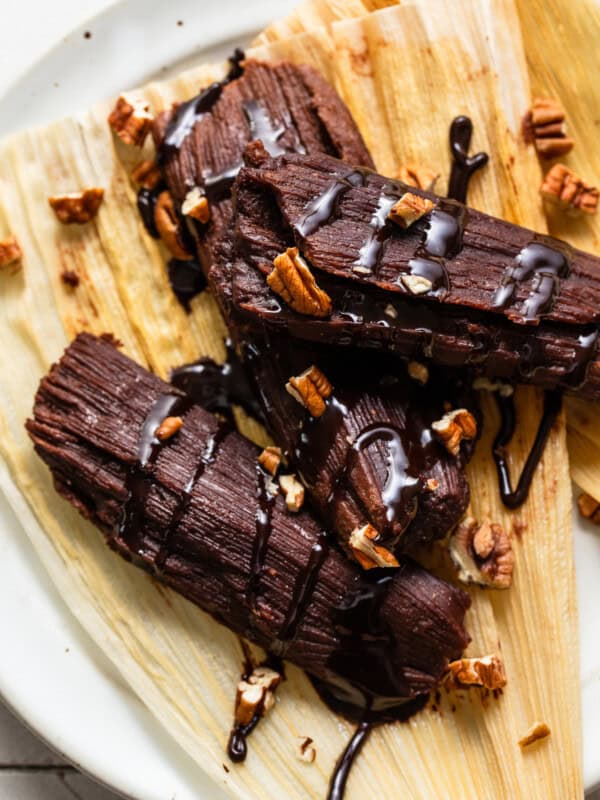This post may contain affiliate links. Please read our disclosure policy.
Atole de Elote is a delicious traditional Mexican drink made from a blend of sweet corn, piloncillo, cinnamon, and milk. This warm and comforting beverage is excellent on a cold day paired with tamales or some pan dulce!
If you love warming winter drinks like this one, try my champurrado, atole de galletas María, or classic Mexican atole.
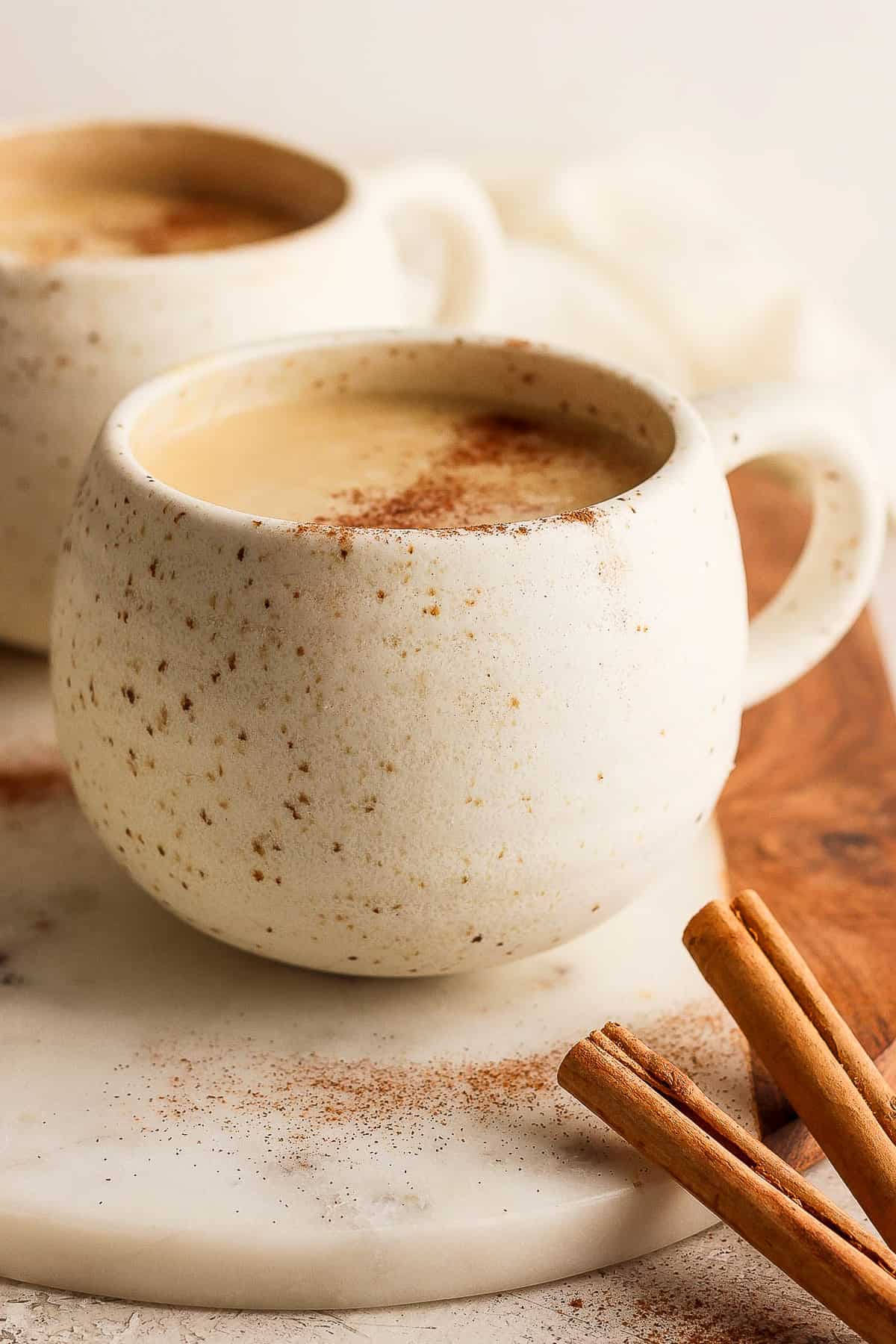
Why I Love This Recipe
In all its many varieties, atole is one of my favorite warm and cozy beverages to curl up with when it gets cold outside. Atole de Elote, in particular, has a lot of great qualities:
- Simple ingredients. This recipe is straightforward, requiring just a few basic ingredients that everyone can find at their local grocery store.
- Authentic flavors. The sweet corn-forward taste is unique, especially in the United States, where those flavors are less common in sweet dishes.
- It’s comforting! Atole is often consumed warm and is especially popular in colder months or as a cozy evening drink.
What is Atole de Elote?
Atole (pronounced ah-toh-leh) is a traditional Mexican hot drink thickened with masa harina and sweetened with piloncillo, cinnamon, and vanilla. Atole de Elote or corn atole is the same, but instead of masa harina, it uses fresh corn kernels for flavor and is thickened with a little bit of milk and cornstarch.
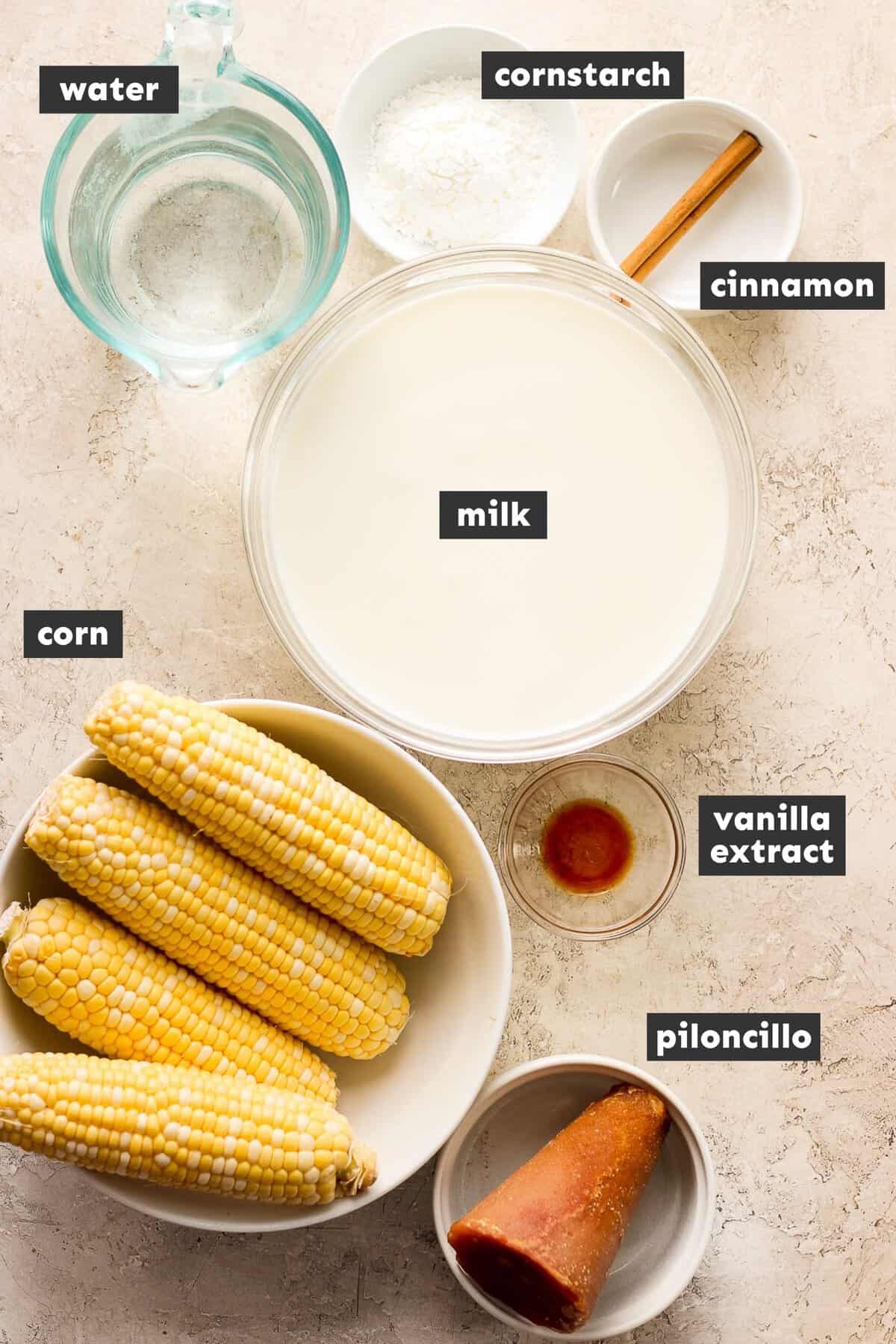
Ingredients
- Fresh corn: Fresh corn on the cob is the secret sauce of this drink. The sweetness of the cinnamon and piloncillo is a nice complement to the corn, enhancing it but letting the corn be the star of the show.
- Ceylon cinnamon stick: Ceylon cinnamon is a higher quality cinnamon that is very common in Mexico. It’s smoother, lighter, and mildly sweeter, making it perfect for atole. It can be found in most Mexican grocery stores or online. That said, you can use standard cassia cinnamon, and the recipe will still turn out just fine.
- Piloncillo: Piloncillo (also called panela) is an unrefined brown sugar sweetener that adds notes of caramel, smoke, and even a little rum! It can be found in most Mexican grocery stores or online.
- Whole milk: Atole is traditionally a thick and creamy drink, and that’s in no small part because of the whole milk.
- Cornstarch: Where the milk starts creating the right texture, cornstarch finishes the job, helping thicken the consistency and mirror the masa harina of traditional atole.
- Vanilla extract: Vanilla extract adds some balance and depth of flavor to the drink.
How to Make Atole de Elote
Add the fresh corn and 2 cups of milk in a blender and blend until smooth.
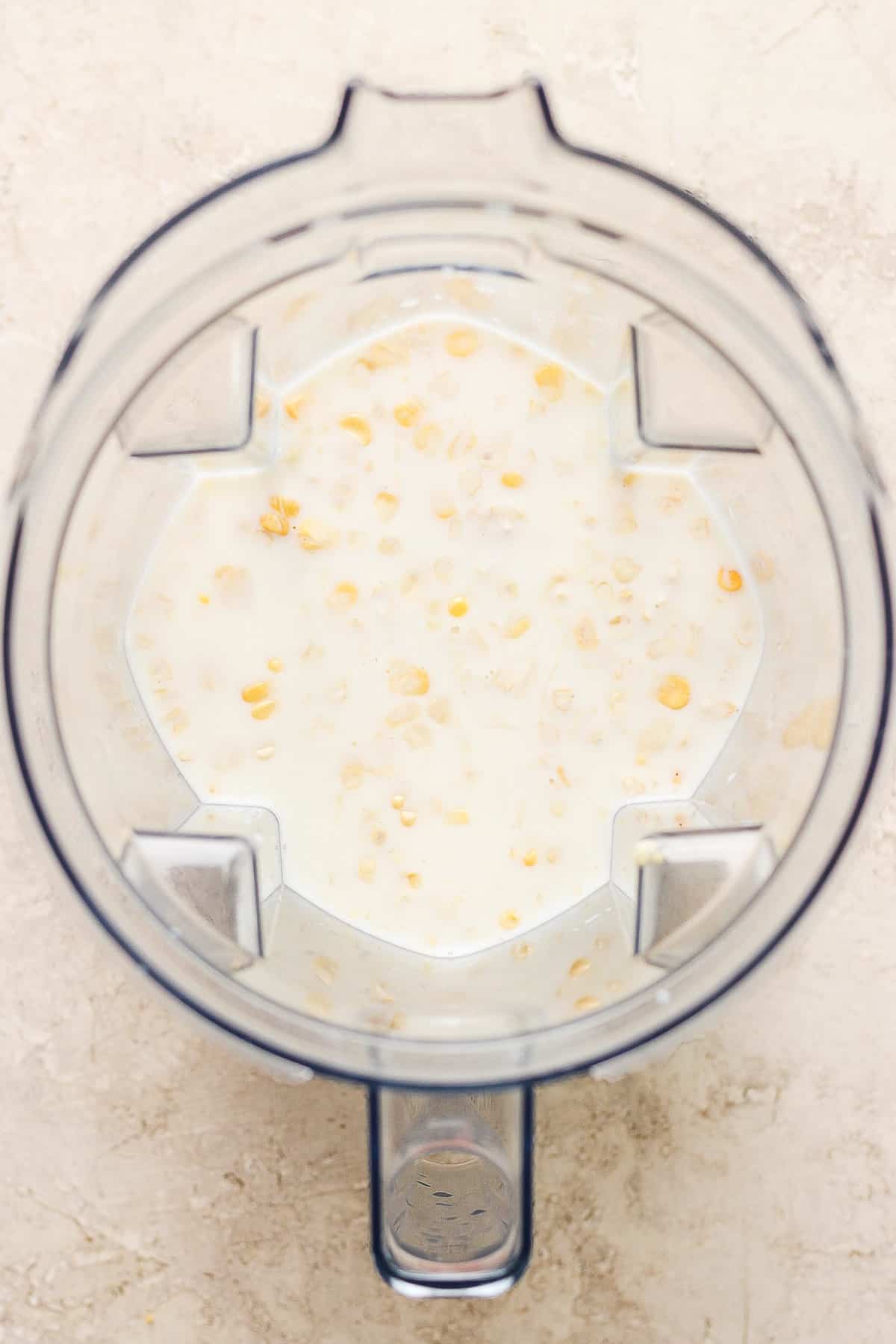
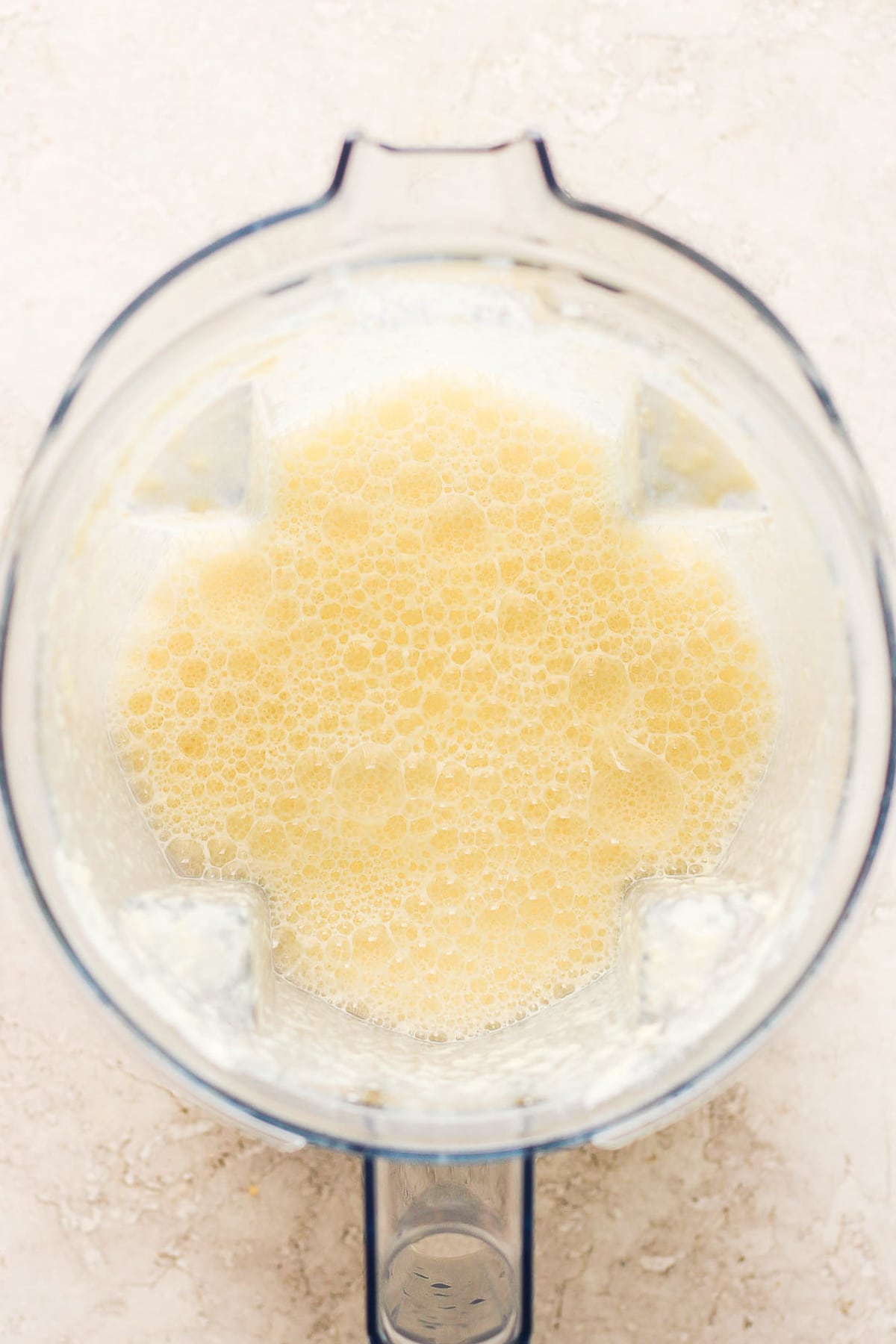
Simmer the water over medium-low heat. Add the cinnamon stick and simmer for 3 minutes. Add the piloncillo and stir until fully dissolved.
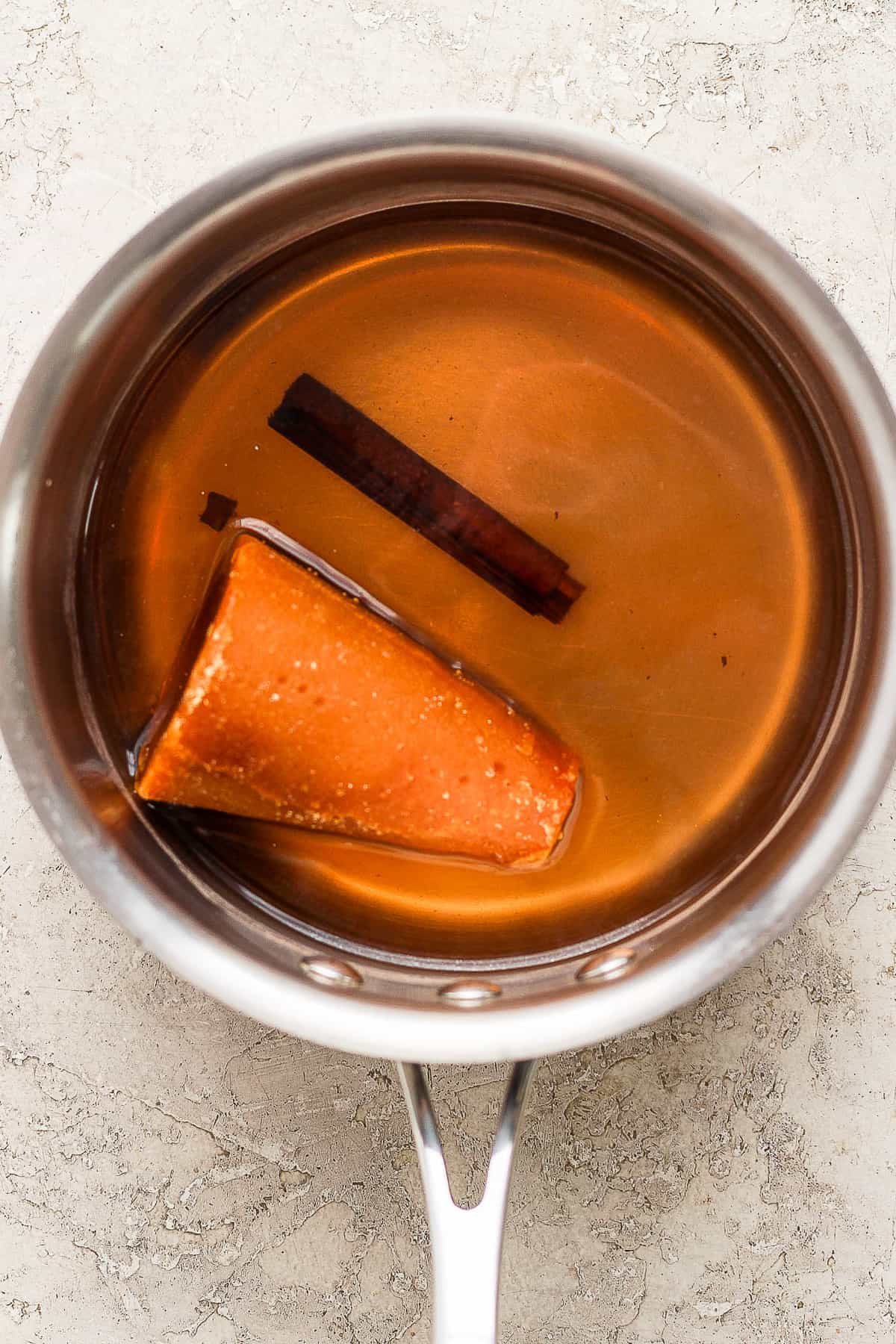
Strain the corn mixture into the pot using a fine mesh strainer, then stir in 1 cup of the remaining milk and the vanilla extract. Continue to gently simmer the atole mixture for 5 minutes, stirring continuously.
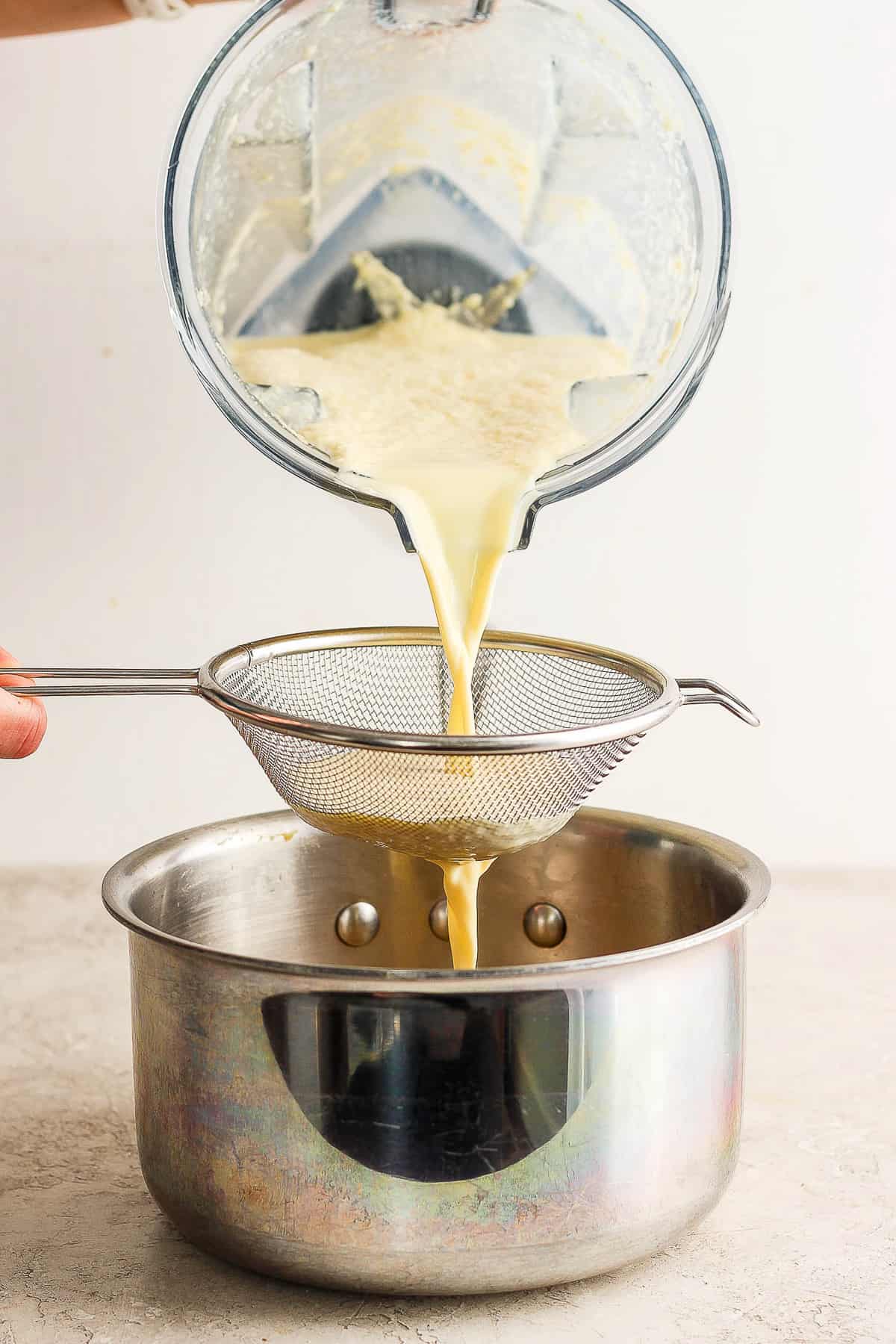
Make a cornstarch slurry by whisking together the cornstarch with the remaining 1 cup of milk until fully combined. Slowly pour it into the pot while whisking.
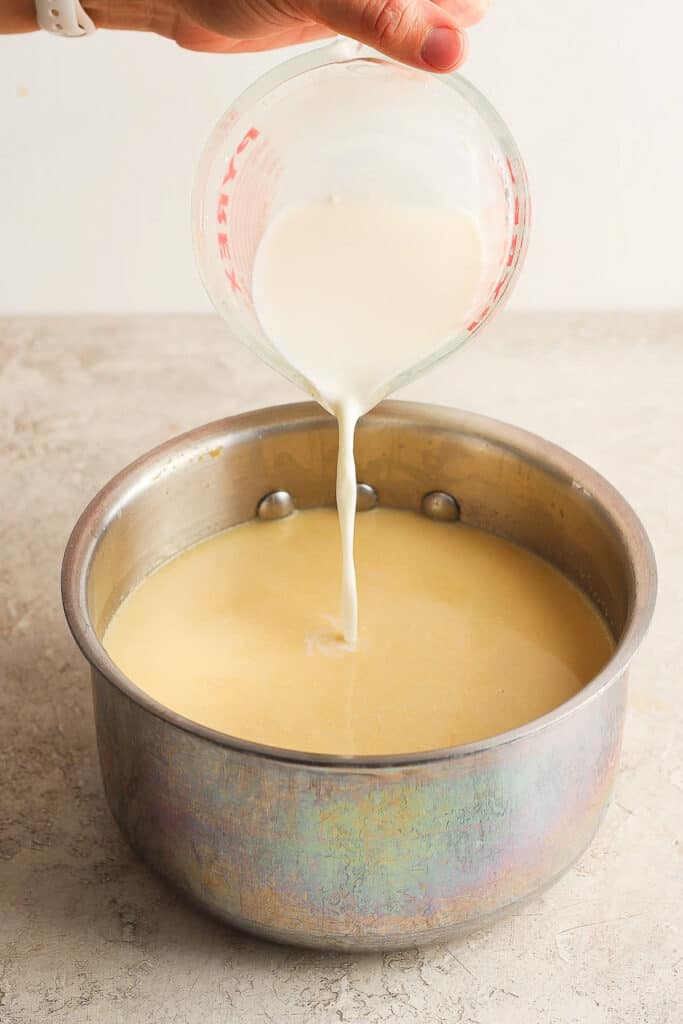
Gently simmer the atole for 10-15 minutes to allow the mixture to thicken, until it coats the back of a spoon.
Remove the cinnamon stick from the pot once the atole has reached the desired consistency. Pour into your cups and garnish with ground cinnamon.
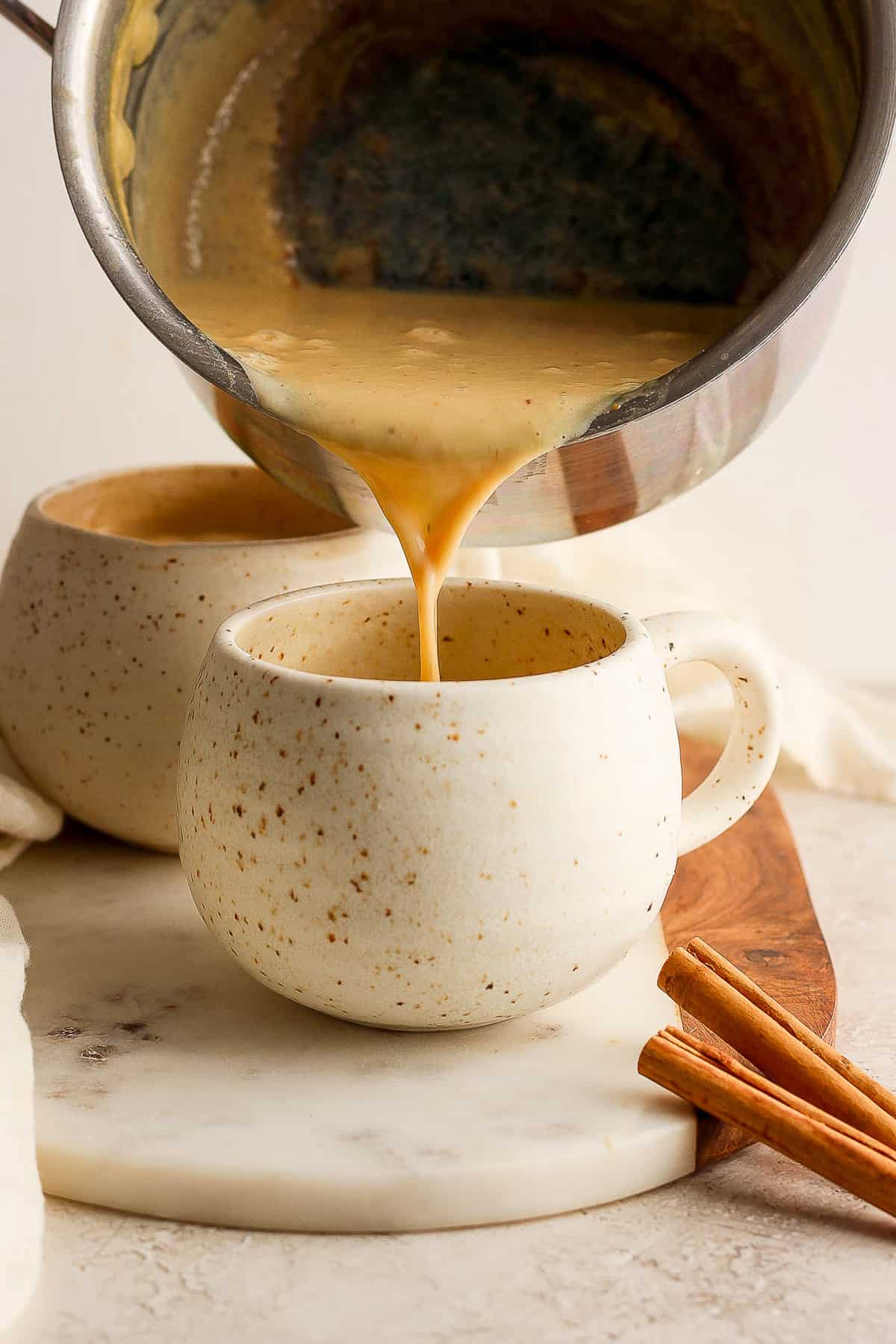
Tips
- You can substitute 1 cup brown sugar instead of the piloncillo.
- You can substitute 2 (15-ounce) cans of drained whole kernel corn instead of fresh corn or 3 cups of frozen corn that’s been thawed.
- Make sure to continuously stir the atole to avoid burning the milk.
- Using whole milk adds a creamy texture and flavor, but you can make this dairy-free by using almond or oat milk.
Recommended Tools
Blender: A good blender is an invaluable tool in any kitchen. This is like the one I have in my kitchen at home, and I know it’ll fit great in yours!
Strainer: A set of strainers like this is one thing I never realized was so valuable until I bought them.
Whisk set: You need to continuously whisk this dish to ensure the milk doesn’t burn. Make sure you’ve got a good set!
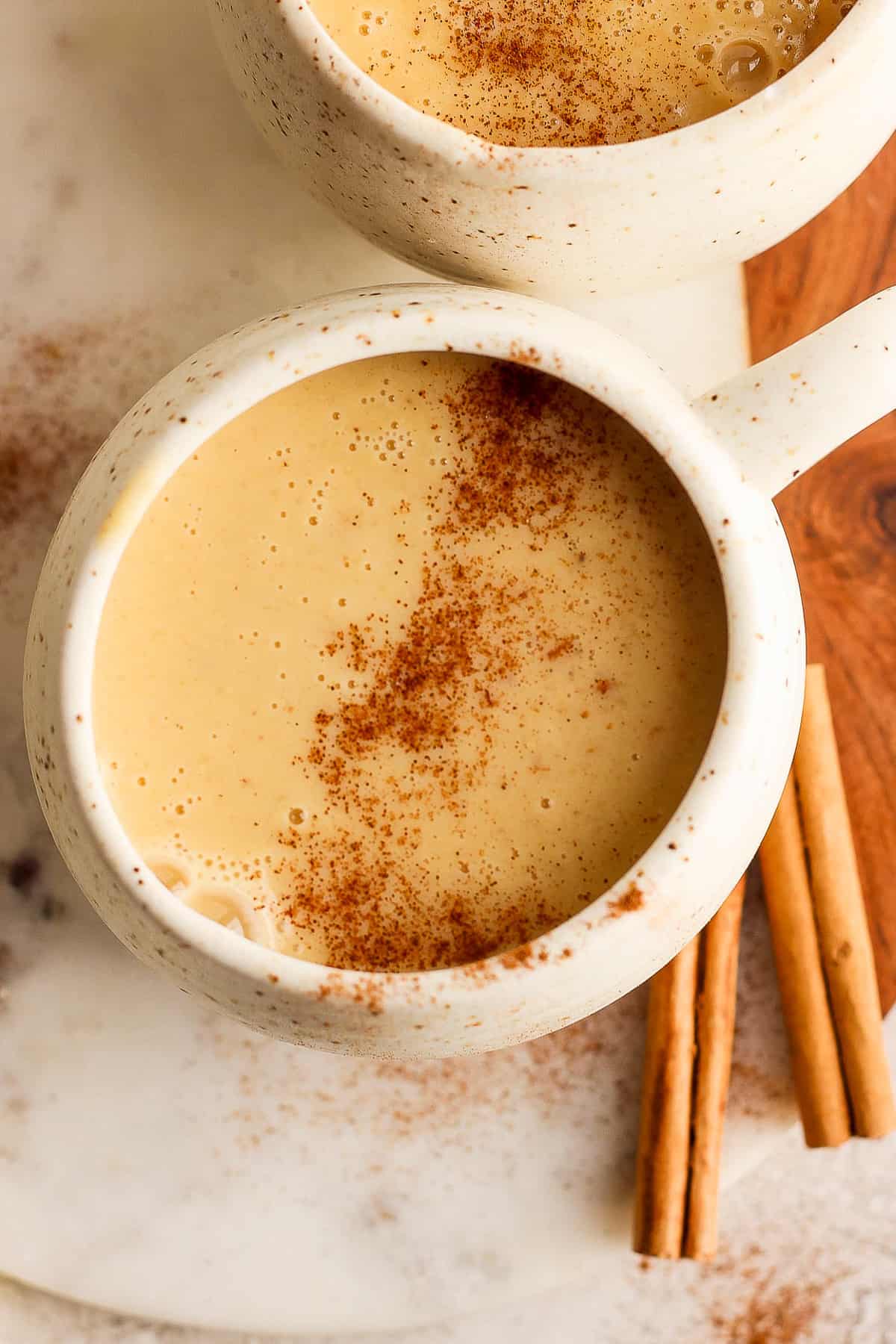
Serving Suggestions
One of my favorite ways to enjoy this atole is with some Mexican pan dulce like conchas, marranitos, or Mexican donuts.
It’s also commonly served with holiday favorites like tamales, empanadas, and buñuelos.
Storing and Reheating
To store, keep the finished and cooled atole in the fridge for up to 2 days. The longer it sits, the thicker it will become.
To reheat, add a splash of milk or water to the atole first. Give it a good stir, then heat it in the microwave or stovetop. Add more liquid until the thickness is to your liking.
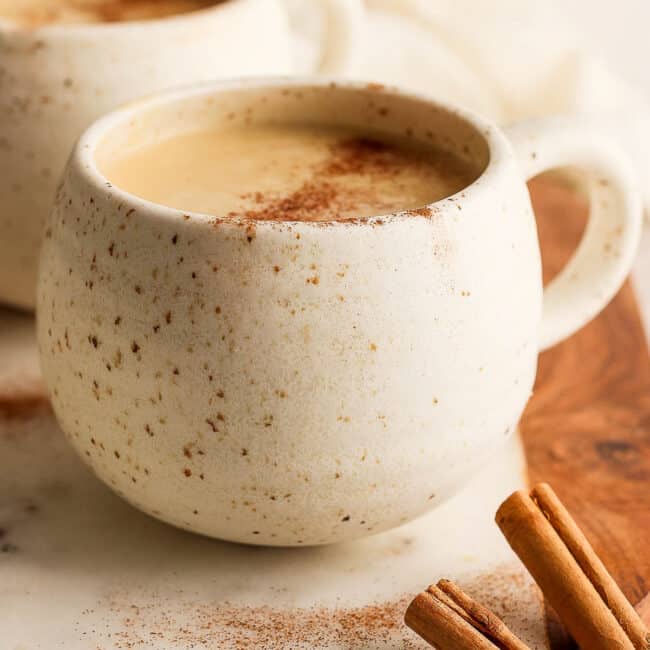
Atole de Elote
Ingredients
- 4 ears fresh corn*, shucked and cut off the cob
- 4 cups whole milk*, divided
- 2 cups water
- 1 cinnamon stick*
- 8 ounces piloncillo*
- 4 tablespoons cornstarch
- ½ teaspoon vanilla extract
- Ground cinnamon, for garnish
Instructions
- Add the corn and 2 cups of milk to a large blender. Blend until smooth.
- In a medium pot or saucepan, bring the water to a simmer over medium-low heat. Add the cinnamon stick and simmer for 3 minutes. Add the piloncillo and stir until fully dissolved.
- Strain the corn mixture into the pot using a fine mesh strainer. Stir in 1 cup of the remaining milk and the vanilla extract. Continue to gently simmer the atole mixture for 5 minutes, stirring continuously.
- Make a cornstarch slurry by whisking together the cornstarch with the remaining 1 cup of milk until fully combined. Slowly pour it into the pot while whisking.
- Gently simmer the atole for 10-15 minutes to allow the mixture to thicken, until it coats the back of a spoon.
- Remove the cinnamon stick and serve immediately in mugs with a dusting of ground cinnamon.
Notes
- Corn: You can substitute 2 (15-ounce) cans of drained whole-kernel corn instead of fresh corn or 3 cups of frozen corn that’s been thawed.
- Piloncillo: You can substitute 1 cup of brown sugar instead of the piloncillo.
- Milk: Using whole milk adds a creamy texture and flavor, but you can make this dairy-free by using almond or oat milk.
- Cinnamon: I recommend using Ceylon cinnamon as that is what’s used in Mexican cuisine, but you can use whichever cinnamon sticks you can find.
Nutrition
Nutrition information is automatically calculated, so should only be used as an approximation.
Photography by Erin Jensen of The Wooden Skillet.






